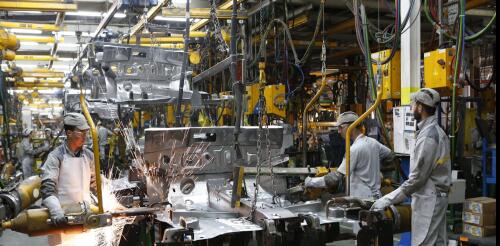Cooling
As intense heat breaks records around the world, a little-reported fact offers some hope for cooling down cities: Under even the most intense periods of extreme heat, some city blocks never experience heat wave temperatures. How is this possible? Civilizations have recognized the power of cities to heat themselves up and cool themselves for centuries. City architects in ancient Rome called for narrowing streets to lessen late afternoon temperatures. Narrow streets were found to cool the air by limiting the area exposed to direct sunlight. The whitewashed architecture of the Greek Isles demonstrates another long-practiced strategy. Light-colored walls and roofs can help cool cities by reflecting incoming sunlight. Whitewashed buildings on the Greek island of Folegandros help deflect the heat rather than absorbing it. Etienne O. Dallaire via Wikimedia, CC BY In hot and humid regions of the southern...
Modern buildings tend to take electricity and air conditioning for granted. They often have glass facades and windows that can’t be opened. And when the power goes out for days in the middle of a heat wave, as the Houston area experienced in July 2024 after Hurricane Beryl, these buildings can become unbearable. Yet, for millennia, civilizations knew how to shelter humans in hot and dry climates. As an architectural designer and researcher studying urban resilience, I have examined many of the techniques and the lessons these ancient civilizations can offer for living in hotter and drier conditions. With global temperatures rising, studies show that dangerously hot summers like those in 2023 and 2024 will become increasingly common, and intense storms might result in more power outages. To prepare for an even hotter future, designers today could learn from the past. Sumerians: Keeping cool together The Sumerians lived about 6,000 years ago in a hot and dry climate that...
A deadly heat wave gripped Asia for weeks in spring 2024, sending temperatures in India’s capital region over 120 degrees Fahrenheit (49 Celsius) in May. Campaigning politicians, news announcers and Indian voters waiting in long lines passed out in the oppressive heat. In June, hundreds of people on the Hajj, a Muslim pilgrimage to Mecca, Saudi Arabia, died in searing heat that reached 120 F (49 C) with high humidity. Most of the planet has suffered the dire effects of extreme heat in recent years. Phoenix hit 110 F (43.3 C) or higher for 31 straight days in summer 2023, and Europe saw unprecedented heat that killed hundreds and contributed to devastating wildfires in Greece. Mexico and neighboring regions were sweltering through a dangerous and long-running heat wave in 2024. Regardless of where or when a heat wave strikes, one pattern has been a constant: Older adults are the most likely to die from extreme heat, and the crisis is worsening....
Not only people need to stay cool, especially in a summer of record-breaking heat waves. Many machines, including cellphones, data centers, cars and airplanes, become less efficient and degrade more quickly in extreme heat. Machines generate their own heat, too, which can make hot temperatures around them even hotter. We are engineering researchers who study how machines manage heat and ways to effectively recover and reuse heat that is otherwise wasted. There are several ways extreme heat affects machines. No machine is perfectly efficient – all machines face some internal friction during operation. This friction causes machines to dissipate some heat, so the hotter it is outside, the hotter the machine will be. Cellphones and similar devices with lithium ion batteries stop working as well when operating in climates above 95 degrees Farenheit (35 degrees Celsius) – this is to avoid overheating and increased stress on the electronics. Cooling designs that use inn...
Picture two homes on the same street: one constructed in the 1950s and the other in the 1990s. There are no trees or other shade. The air conditioning units are identical, recently replaced, and operating perfectly. Identical thermostats are set at 82 degrees Fahrenheit (27.8 Celsius). When it’s 110 F (43.3 C) outside, the 1950s house will likely feel at least 10 F (5.6 C) warmer inside, even with the same air temperature. Why? The answer has to do with radiant heat. Radiant heat is what keeps you toasty warm at a campfire on a cold winter night. The fire doesn’t warm the air much; rather, like the Sun, most of the fire’s heat moves through invisible waves directly from the campfire to your body. In the radiant heat of the Arizona sun, the surface temperature of the uninsulated post-and-beam ceilings in my house, one of 41,000 built in Tucson during the post-World War II era, can reach over 100 F (37.8 C). The single-glazed steel windows register 122 F (50 C...




